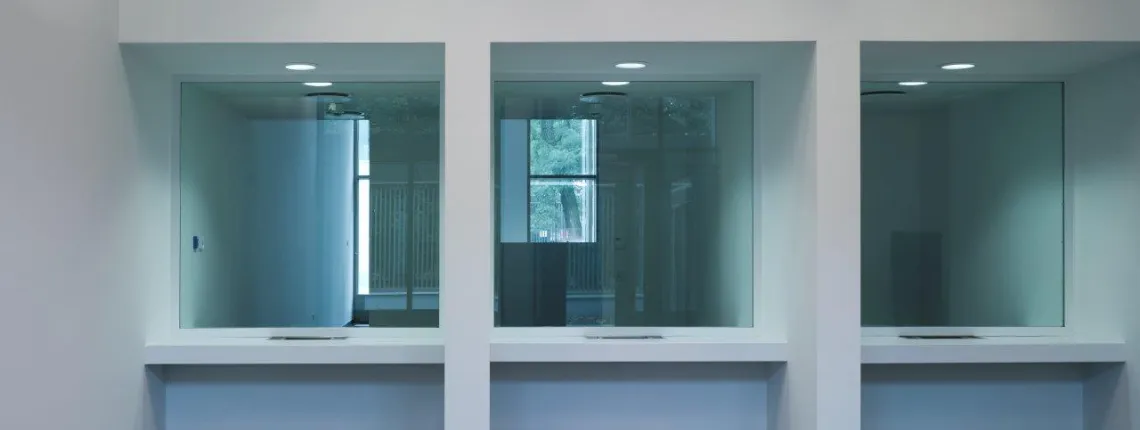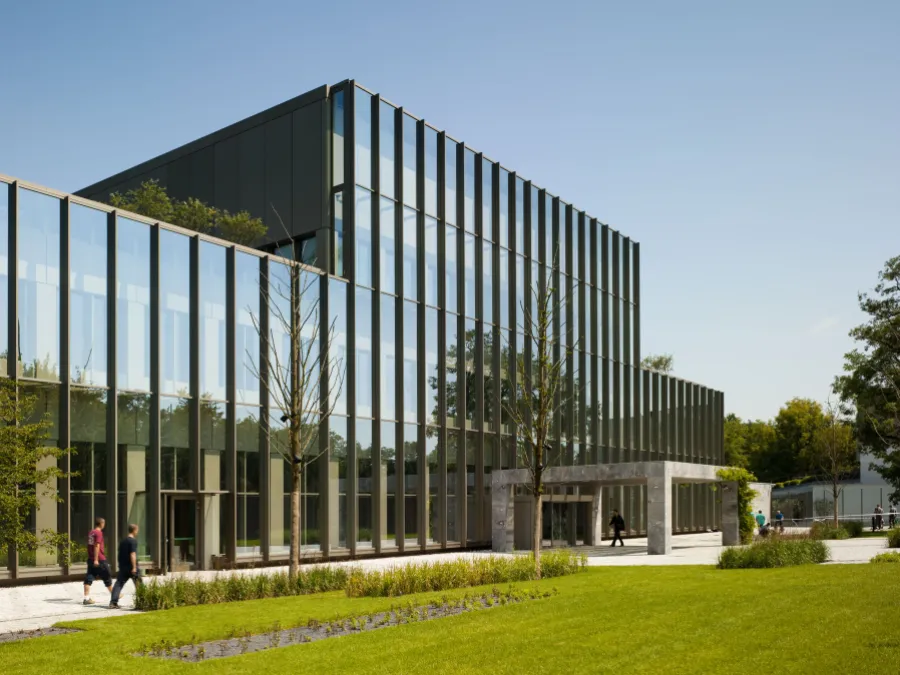Integrating Ballistic Resistance in Government Facilities

Protecting government buildings means thinking beyond locks and cameras. With rising threats, from public unrest to deliberate armed attacks, facilities like courthouses, police stations, and embassies need more than basic security. They need real, tested and certified protection.
That’s where bullet-resistant glass systems come in. These aren’t just toughened windows, they're part of an integrated defence strategy. From secure doors and partitions to glazed façades and counters, every component is designed to resist ballistic impact while maintaining the appearance of standard architectural glass.
At Vetrotech, we understand that public buildings must feel open and inviting, but also stand firm when it counts. Our focus is on delivering solutions that strike a balance between security, transparency, and safety, all while incorporating design.
In this blog, we’ll walk you through how bullet-resistant glass systems work, the benefits they bring to government buildings, and what you should consider before installation. Because when it comes to safety, there’s no room for compromise.
Understanding Bullet-Resistant Glass Systems
Bullet-resistant glass, technically referred to as ballistic-resistant glazing, is engineered to absorb and slow down the energy of a bullet, preventing penetration and reducing the risk of injury. But the glass itself is only one part of the solution.
At Vetrotech, we take it a step further with our VDS® line, a range of bullet resistant doors, partitions and facades, that are a fully integrated system that includes certified glass, framing, hardware and accessories. Every component is tested together, not just as a standalone glass, to ensure performance under real-world threat conditions.
The glass used in these systems is typically a laminated structure, consisting of multiple layers of glass and flexible interlayers, Poly Vinyl Butryate. These layers work together to disperse impact energy and trap projectiles.
All VDS systems are tested to EN 1522 and 1523 ballistic standards to be classified as FB1 to FB7 offering protection against ammunition from handguns to high-powered rifles.
When selecting bullet-resistant glass for government building protection, it’s crucial to match the threat level with the proper classification.
It’s important to note bullet-resistant glass isn’t indestructible. It’s designed to withstand specific threats for a limited number of impacts. That’s why choosing the right class and a thoroughly tested system, such as Vetrotech’s VDS, is essential.
With options that also incorporate fire and blast resistance, the VDS bullet-resistant range delivers discreet, multi-threat protection, ideal for embassies, residences of VIPs, public offices, security-sensitive areas, and other high-risk government environments.
Benefits of VDS Bullet‑Resistant Solutions in Government Buildings
|
Benefits |
What it Means in Practice |
|
Delay & Deter |
Multi‑laminate glazing, steel framing and secure fixings absorb energy from handgun or rifle rounds, buying precious seconds for first responders. |
|
Discreet Defence |
VDS systems look like standard clear glass with aesthetic profiles, maintaining natural light and public openness while offering hidden strength. |
|
Compliant Security |
Every product is tested and certified to EN 1522 and EN 1523 (ballistic) and related safety codes, streamlining approvals for government building protection projects. |
|
Multi‑Threat Resistance |
Glass, frames, seals and fixings can be combined with fire‑rated make‑ups, creating seamless all‑hazard continuity across doors, partitions, glazed roofs or full façades. |
Technical Considerations Before Installation
- Define the threat level first
Match the expected threat, handgun, shotgun or rifle, to the correct EN 1522 and EN 1523 class (FB1 to FB7). A rural council office might require BR2, whereas a national police headquarters may need BR6 or BR7 glazing in reception areas.
- Check the wall and frame compatibility
VDS frames, engineered in steel, are designed to spread impact loads into the surrounding structure. Specify mullions, fixings and anchorage that meet or exceed the same ballistic class.
- Use certified installation teams
Even the finest bullet-resistant glass can fail if it is not installed correctly. Material handling, sealant selection and quality‑assurance checks are vital in ensuring that every bullet-resistant glass installation is compliant and performs exactly as its test report indicates.

Combining Ballistic and Blast Resistance
When it comes to securing government buildings, it’s essential to understand that ballistic resistance and blast resistance are distinct, even though both address physical threats. Here’s a quick look at how they differ:
1.Ballistic Resistance
What it protects against
- Bullets fired from handguns, rifles, or shotguns
- Direct, high-velocity impacts from small projectiles
How it works
-
Bullet-resistant glass is made from layered materials that absorb impact and stop bullets from penetrating. Glazed systems are tested under EN 1522 and EN 1523, with ratings from FB1 to FB7, depending on the firearm type and bullet speed.
Common applications
- Reception desks
- Security checkpoints
- Glazing near public access points
- Transaction windows and entrances
2. Blast Resistance
What it protects against
- Explosions, such as car bombs or IEDs.
- Overpressure shockwaves and flying debris from a blast.
How it works
- Glass and framing systems are engineered to flex and hold together under extreme pressure, minimising fragmentation.
- Assessed using EN 13541, EN 13123 – 1,2, or EN 13124 – 1,2 depending on applications, which measures the level of blast pressure the system can withstand.
Common applications
- Embassies
- Military buildings
- Government labs and critical infrastructure
- High-security control rooms
Designing for Safety Without Compromise
As the security landscape continues to evolve, so must the way we design and protect government spaces. From day-to-day operations in public offices to high-risk areas like embassies and police headquarters, integrating ballistic and blast resistance is no longer optional, it’s a practical necessity.
By combining tested glass systems with compatible frames, proper fixings, and certified installation, it's possible to create environments that feel open and accessible while offering reliable protection when it matters most. Whether you're planning new infrastructure or upgrading existing facilities, early consideration of threat levels, material performance, and compliance standards will ensure that safety is built in from the start.
The goal is clear: protect people, maintain functionality, and do so without compromising design or transparency. With the right systems in place, government buildings can be both welcoming and resilient.
